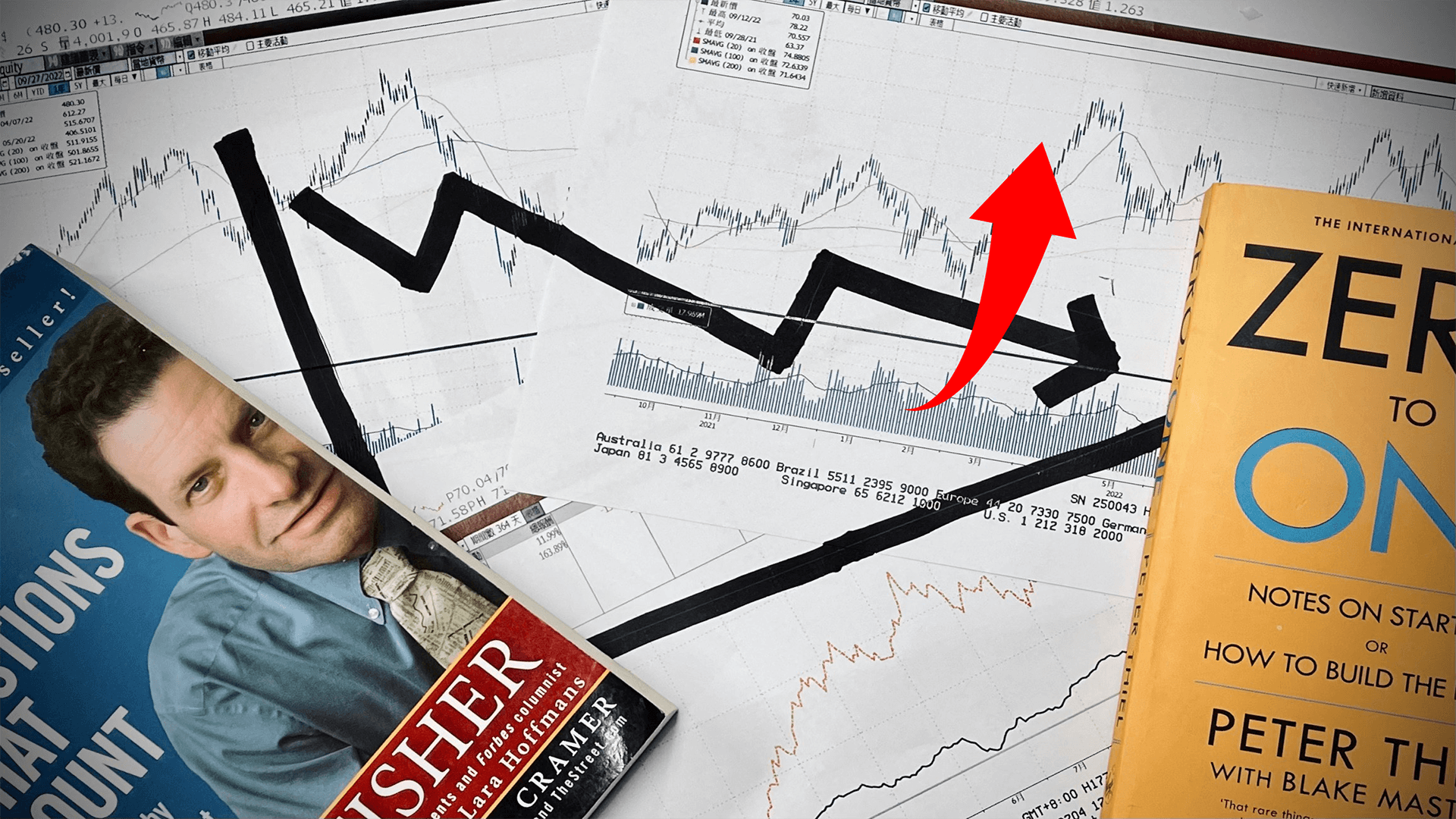|
| For a Better Tunghai |

by Charles Cheng, CFA
The bounce-back in global equities sputtered with the release of higher-than-expected core inflation data and hawkish talk from the US Fed. With the economy still slowly expanding amid the uncertainty of higher interest rates and a possible Fed induced downturn going into next year one might say that this is a “stock pickers market”, a term used by brokers to talk about trading in a market without a clear trend. Last month, we talked about how companies with certain advantages can be buys in any environment and timing as long as the price is right. But what about other types of publicly companies, that make up the majority of names traded? There should be plenty of opportunities to make money picking these companies as their individual fortunes rise and fall, but the ease of doing so may be more difficult than most investors think.
由於高於預期的核心通脹數據的發布和美聯儲的鷹派言論,全球股市反彈受阻。 隨著全球經濟在利率上升的不確定性以及可能由美聯儲導致的經濟衰退延續至明年中緩慢擴張,人們可能會說這是一個“選股市場”。 這是經紀人用來談論在沒有明確市場走向時投資的一個說法。 上個月,我們談到了只要價格合適,如何在任何環境和時機都可以收購具有一定優勢的公司。 但是其他類型的上市公司呢,它們佔據著股市的大部分。 隨著這些公司市值的起起伏伏,挑選這些公司應該有很多賺錢的機會,但這樣做的難易程度可能比大多數投資者想像的要困難。
If you believe strongly that the outlook of a company will be good in the coming year, does that mean you should clearly buy it? The answer is not that simple. Maybe everyone else also thinks the company will do well, so not only is the view already priced in the valuation of the stock, but there is more chance for potential disappointment. But wait, you may think that the outlook for the company is still better than most people realize, in which case the stock would still outperform. The problem is, “most people” are not the ones buying and selling the stock every day.
如果您堅信一家公司來年的前景會很好,那是否意味著您確定應該購買它? 答案並不那麼簡單。 也許其他人也認為該公司會做得很好,所以這種觀點不僅已經反映在股票的估值中,而且還有更多潛在的失望機會。 但是等等,你可能會認為公司的前景仍然比大多數人意識到的要好,在這種情況下,股票仍然會跑贏大盤。 問題是,“大多數人”並不是每天買賣股票的人。
The real time stock prices of well-known companies that you can see quoted on TV and the internet are the actual transacted prices that hundreds or thousands of market participants are trading at throughout the day. These participants can include individual traders, but trading volume is dominated by the activity of banks, mutual funds and other large participants. Those who are actively making a decision to buy or sell shares of a company are going to have a view based on their own research and analysis. It is these professional firms who are often the ones to drive the pricing.
您在電視和互聯網上看到的知名公司的實時股價是成百上千的市場參與者全天交易的實際成交價格。 這些參與者可以包括個人交易者,但交易量主要由銀行、共同基金和其他大型參與者的活動主導。 那些交易量大的一般都是根據自己的研究和分析得出自己的看法來進行。 這些專業公司往往是推動定價的人。
Banks and institutional brokerage houses (ie. The “Sell side”) will have analysts who specialize in the company’s industry and maintains its research coverage. They will have a detailed financial model of the company that forecasts its performance and accounting statements several years out. The average of these forecasts is said to be the ‘consensus’ and when the company reports their actual earnings, a discrepancy between the consensus and the forecast is called a ‘surprise’, whether positive or negative. The Sell-side will issue recommendations on the stock based on these analysts’ forecasts and analysis.
銀行和機構經紀公司 (即“銷售方”) *註都有專門研究某個公司行業並保持其研究範圍的分析師。 他們有一個詳細的公司財務模型,可以預測該公司幾年後的業績和會計報表。 這些預測的平均值被稱為“共識”,當公司報告其實際收益時,共識與預測之間的差異被稱為“驚喜”,無論是正面的還是負面的。 銷售方將根據這些分析師的預測和分析對股票提出建議。
However, despite appearances, these recommendations are not meant to be taken at face value. The ratings and analysis are often influenced by the need to maintain access or a corporate relationship with the covered company. The forecasts often don’t reflect the most updated information, if the analysts are in between reports.
然而,儘管銷售方給出了上述建議,但這些建議並不能以其表面論點觀之。 對於公司的評級和分析通常受到訪問權限或與覆蓋公司的關係所影響。 如果時間點介於兩個報告之間,則分析師的預測通常不會反映最新信息。
On the other hand, the large institutional customers of these banks and brokerages, like mutual funds and endowments, do indeed have a greater level of access to the analysts, their detailed models, and directly to the company itself in which they can maintain their own models that are more objective and up to date. The real ‘consensus’ opinion on a company is much closer to the forecasts made by these funds rather than the reported Wall Street consensus.
另一方面,這些銀行和券商的大型機構客戶,如共同基金和捐贈基金,確實可以更深入地接觸分析師、他們的詳細財務模型,以及直接接觸公司本身,他們可以在其中維護自己的更客觀和最新的模型。 關於一家公司的真正的“共識”意見其實更接近這些基金所做的預測,而不是華爾街所報導的共識。
Even for large institutional investors with these advantages, it is still very difficult for them to make excess returns over the broad market performance, and most funds indeed do not. Their views on a stock need to be both significantly different and more accurate than the true consensus, and their trade horizon has to include a catalyst that moves the consensus towards their view, like an earnings release. And they need to find enough of these ideas to invest over their entire portfolio and cover their transaction costs.
即使是具備這些優勢的大型機構投資者,想要在大盤中獲得超額收益仍然非常困難,而且大多數基金確實沒有做到。 他們對股票的看法需要截然不同且比真正的共識更準確,而且他們的交易視野必須包括一種催化劑,比如公司收益的發布,來將這個共識推向他們的觀點。 他們需要找到足夠多的這些想法來進行他們的整個投資組合併支付他們的交易成本。
Individual investors have an even more difficult time, without the resources to form a full investment team or access to the analysts, companies, and fund managers to get same level of information to form an accurate picture for company performance and Wall Street positioning. So, what are you to do if you want to do your own investments?
對於個人投資者,他們的處境更加困難,因為他們沒有資源來組建完整的投資團隊,也沒有機會接觸分析師、公司和基金經理以獲取相同水平的信息,從而準確了解公司業績和華爾街定位。 那麼,如果你想做自己的投資,你會怎麼做?
There may be certain companies where you do have a particular insight on future performance that you are sure are different from consensus. You could put part of your portfolio into the trade. For all other companies where you don’t have a strong handle on these variables, it’s better to avoid trading at all.
也許對於某些公司您確實對未來業績有特定的見解,您確信這與共識不同。 您可以將部分資金投入該公司。 然而對於您無法很好地處理存在變量的所有其他公司,最好完全避免投資。
Also, you can, to extend your time horizon when looking at investment opportunities. Wall Street typically focuses on the next quarter and will often under-weight companies when near term earnings are unexciting, regardless of their long term structural competitive advantages. If you’re looking to buy a strong company at a good to fair price and hold it for five to ten years, there is no need to play the expectations and forecasting game.
此外,您可以在尋找投資機會時延長您的投資期限。 華爾街的關注點通常都在於下一季度,並且無論這些公司的長期結構性競爭優勢如何,他們通常會在近期收益不理想時減持公司。 如果你想以合理的價格購買一家實力雄厚的公司的股票並持有五到十年,則無需進行上述的預期和預測遊戲。
Finally, for the rest of your portfolio, you can earn the market return through buying index funds or ETFs so that you don’t incur opportunity costs by spending too much time in cash. It may not be the most exciting thing, but it’s better (and much less expensive) than trading without an edge.
最後,對於您投資組合的其餘部分,您可以通過購買指數基金或 ETF 來獲得市場回報,這樣您就不會因持有太多現金上而產生機會成本。 這可能不是最令人興奮的投資方法,但它比沒有優勢的交易更好(而且便宜得多)。
註:Sell side 一詞在投資圈有其特定涵義:指券商或投顧給其客人的市場/產業/個股的研究報告,目的是要他的客人 (投信/銀行/保險公司) 購買其服務~通常是下單給證券公司。 所以在這裡Sell side 不能翻譯成賣方; 賣方的英文是Seller。
This article reflects the personal views of the author and not any firm’s and should not be viewed as an investment recommendation
● 讀後留言使用指南
近期迴響